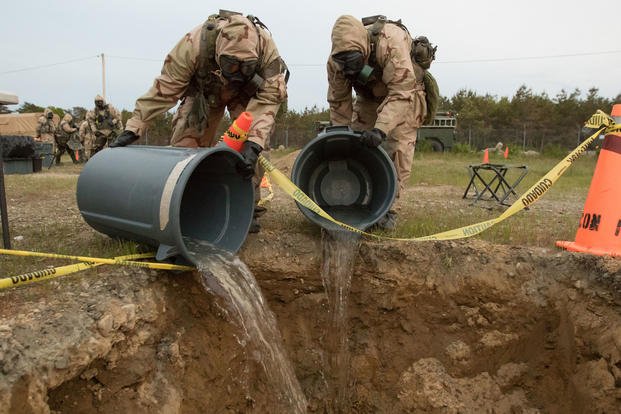The Impact Of Contaminated Water in Military Bases

For decades, the military has significantly contributed to water contamination across the United States.
This contamination has a long and complex history, with roots dating back to the early 20th century. Over the years, the military has used a variety of chemicals, including solvents, fuels, and pesticides, at its installations, many of which are toxic and harmful to the environment and human health.
In some cases, the military was aware of the potential risks posed by these chemicals but failed to take action to prevent their release into the environment.
This article covers the history of contaminated water at a military base and famous cases shaping public opinions.
Table of Contents
Health Issues In The Community
The contamination of water sources at military bases can have serious and long-lasting effects on the health of local communities and military personnel. The reality for many people in the area is that their irrevocable problems start appearing years later, and many often do not even get the full truth of their problems.
One might see genetic problems in the families, such as:
- Cancer: Exposure to chemicals like benzene and TCE has been linked to an increased risk of cancer, including leukemia, lymphoma, and other cancers of the blood and lymphatic system.
- Reproductive and developmental harm: Exposure to TCE and PCE has been linked to congenital disabilities, developmental problems, and infertility.
- Nervous system problems: Exposure to chemicals like TCE and PCE can cause problems with the nervous system, including headaches, dizziness, and difficulty concentrating.
- Liver and kidney damage: Exposure to chemicals like TCE and PCE can cause liver and kidney damage.
- Immune system damage: Exposure to chemicals like benzene can weaken the immune system and make people more susceptible to infections.
Even today, after so much outrage, there are still common cases of toxic chemicals in the water being rampant. In a recent DOD test, PFAS was found in at least 12 military bases at high toxicity levels, raising serious alarm bells across government agencies.
Historical Overview Of Incidents At Military Bases
The issue of water contamination at military bases has a long and complex history that spans several decades.
In the mid-20th century, the Department of Defense (DOD) began using and disposing of hazardous chemicals, including solvents and fuels, at military installations across the United States. These practices resulted in contaminated soil and groundwater with toxic chemicals that pose significant risks to human health and the environment.
One of the earliest and most well-known water contamination incidents at a military base occurred at Camp Lejeune in North Carolina. The base was contaminated with toxic chemicals, including benzene, trichloroethylene (TCE), and perchloroethylene (PCE), that seeped into the groundwater and polluted the drinking water supply.
Decades of exposure to these harmful chemicals have led to the Camp Lejeune Lawsuit
Beyond Camp Lejeune, other contamination incidents have been reported at military bases across the country, including at Fort McClellan in Alabama, Pease International Tradeport in New Hampshire, and Wurtsmith Air Force Base in Michigan.
The historical overview of contamination incidents at military bases highlights the need for continued action and accountability in addressing this serious public health and environmental issue.
Government’s Response
The issue of water contamination at military bases has been a major concern for both the government and local communities. The government has taken various steps to address this issue over the years, but the response has often needed to be faster and more adequate.
In some cases, the DOD has initiated cleanup efforts to remove contaminated soil and groundwater at military bases.
However, these efforts are often slow and costly, taking many years to complete and requiring millions of dollars in funding. The DOD has also been criticized for not being transparent about the extent of the contamination and for failing to adequately communicate with local communities about the risks posed by the contaminated water.
The Environmental Protection Agency (EPA) is also involved in addressing water contamination at military bases. The EPA has the authority to enforce federal laws that protect the environment, including the Comprehensive Environmental Response, Compensation, and Liability Act (CERCLA), which requires the cleanup of contaminated sites.
In 2021, the Biden- Harris administration decided to expand the DOD and EPA facilities to test for PFAS with a definite roadmap. Considering that this chemical has become endemic to military areas, it is a huge step in combating the problem of water contamination near military bases.
Conclusion
The history and impact of contaminated water at military bases is a complex and ongoing issue that has had far-reaching consequences for the environment and human health. Despite efforts by the military and government to address this issue, the contamination of water sources at military bases continues to be a major concern.
The exposure of local communities and military personnel to toxic chemicals in contaminated water has been linked to an increased risk of cancer, congenital disabilities, developmental problems, and other serious health problems.
The legacy of contamination at military bases serves as a reminder of the need for continued action and accountability to ensure that the use of hazardous substances at military installations is properly regulated and managed to minimize the risk of harm to human health and the environment.












